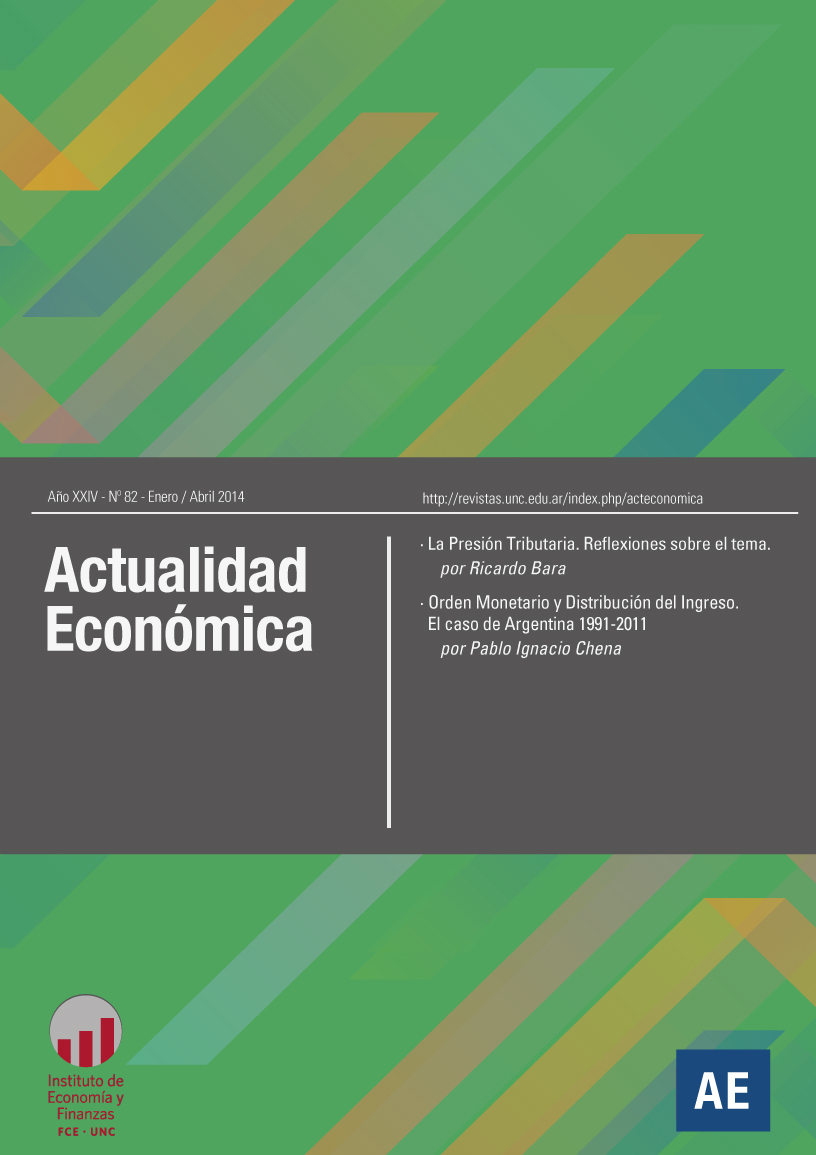The Tax Pressure Reflections on the subject
Keywords:
Tax burden, Public resources, regulationAbstract
Fiscal pressure, and other related concepts such as tax pressure or tax burden, have been devised to estimate the magnitude of the state and the requirements it makes of the private sector to finance itself. For this purpose, indicators are developed based mainly on relating tax collection amounts to the national product. The absolute value of the indicator and its variations are used to evaluate fiscal policies.
It is quite common when analyzing the evolution of the tax burden in Latin America to point out that it has increased significantly in the last decade and this increase is considered as something positive. The arguments supporting this assessment are not many or very well developed. Generally, they refer to unsatisfied social demands, to the need to achieve fiscal solvency, to comparison with higher tax pressures in other countries or regions. In any case, the idea that greater public resources are a good thing predominates.
Greater public resources imply that there will be relatively fewer private resources. In other words, there will be more resources whose use will come from political decisions and fewer at the disposal of the people who generated them and must transfer them coercively. In other words, what proportion of resources for voluntary private exchanges and what proportion for collective and coercive exchanges. This question deserves further consideration and this should be done taking into account a warning by James Buchanan. When analyzing fiscal issues, we must keep in mind what kind of state behavior we are assuming, and it must be based on an analysis of "politics without romanticism".
Downloads
Downloads
Published
How to Cite
Issue
Section
License

This work is licensed under a Creative Commons Attribution-NonCommercial-NoDerivatives 4.0 International License.
Those authors who have published with this journal, accept the following terms:
Authors will conserve their copyright and guarantee the magazine the right of first publication of their work, which will be simultaneously subject to the Creative Commons Attribution-NonCommercial-NoDerivative 4.0 International License that allows third parties to share the work as long as the author and first publication of this magazine are indicated.
Authors may adopt other non-exclusive license agreements to distribute the published version of the work (e.g., deposit it in an institutional telematic archive or publish it in a monographic volume) provided that the initial publication in this journal is indicated.
Authors are allowed and encouraged to disseminate their work through the Internet (e.g., in institutional telematic archives or on their website) before and during the submission process, which may lead to interesting exchanges and increase citations of the published work. (See The effect of open access)









